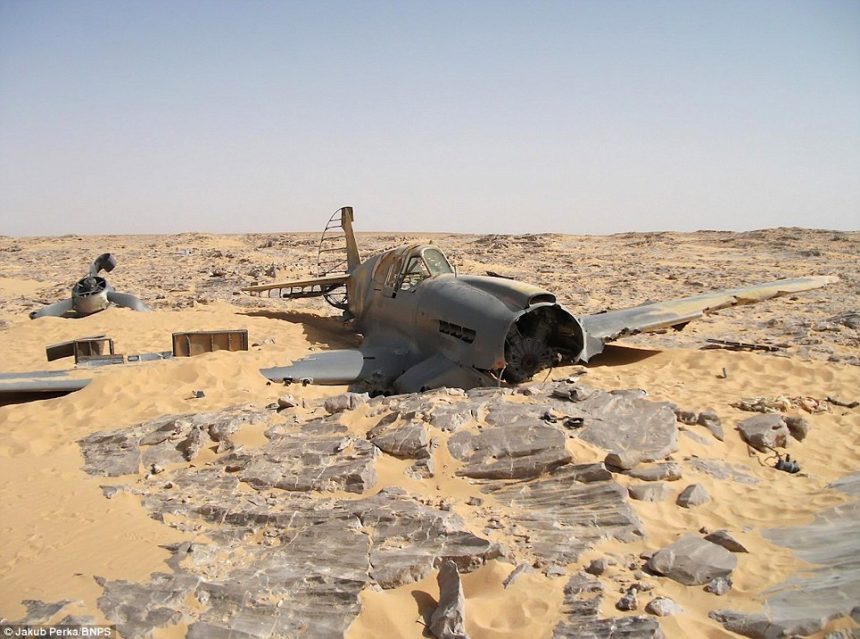Polish oil company worker Jakub Perka was exploring a remote region of the Western Sahara desert in Egypt when he stumbled across a plane, later identified as a UK’s Royal Air Force P-40 Warhawk, almost intact and untouched, that went missing in 1942, during WWII.
The plane was so perfectly preserved it still had guns and ammunition, which was taken away by the Egyptian military after Jakub had reported the crash site.
There was no sign of the pilot, no body or remains within the vicinty of the aircraft. However, it is obvious that he survived the crash as his parachute was still attached to the fuselage; a sign that it was probably used as shade by the pilot whilst he waited it out.
Also the radio and batteries were found outside the plane: most probably the pilot tried to contact someone to request help, before eventually opting to walk his way out … to his death. It is though the pilots remains are situated somewhere within a 20 miles radius of the crash site with little or no hope of ever finding his body. He was unfortuate enough to have crashed some 200 miles from the nearest town, so had no chance of rescue.
The RAF airman is thought to have been Flight Sargent Dennis Copping who would have been 24 at the time of the crash. He was the son of a Dentist from Southend, Essex and was a member of 260 squadron, a fighter unit based in Egypt during the the North Africa campaign during WW2. On Jun. 28 1942, Flt Sgt Copping and another pilot were tasked with transferring two damaged P-40s from one base to another to be repaired. Most likely, during the short flight Flt Sgt Copping lost his bearings and went off course, never to be seen again.
The British Ministry of Defense is very interested in what has been dubbed as the “aviation equivalent of Tutankhamun’s Tomb”. The single seat fighter plane could be recovered, restored and then displayed at the Museum at Hendon, north London.
The MoD has requested the defense attache at the British Embassy in Cairo to travel to the crash site and gain the serial number to confirm the true identity of the plane. There are fears, however, now that everyone is aware of its existance, that locals would start to strip the aircraft of instruments and items to be sold for scrap.
Captain Paul Collins, the British defense attache to Egypt has confirmed that a search for Flight Sargent Copping’s body will be made in the hope that his remains can be found and a fully military burial performed.
Richard Clements for TheAviationist.com
Image credit: Jakub Perka via Mail Online










